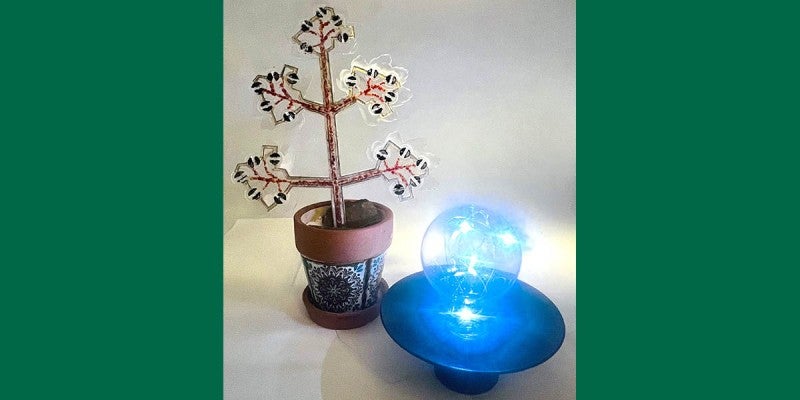Scientists invent artificial plant that cleans indoor air and generates electricity
Artificial plant is nine-times more effective at removing CO2 than natural plants

Your support helps us to tell the story
From reproductive rights to climate change to Big Tech, The Independent is on the ground when the story is developing. Whether it's investigating the financials of Elon Musk's pro-Trump PAC or producing our latest documentary, 'The A Word', which shines a light on the American women fighting for reproductive rights, we know how important it is to parse out the facts from the messaging.
At such a critical moment in US history, we need reporters on the ground. Your donation allows us to keep sending journalists to speak to both sides of the story.
The Independent is trusted by Americans across the entire political spectrum. And unlike many other quality news outlets, we choose not to lock Americans out of our reporting and analysis with paywalls. We believe quality journalism should be available to everyone, paid for by those who can afford it.
Your support makes all the difference.Scientists have invented an artificial plant that can simultaneously clean indoor air while generating enough electricity to power a smartphone.
A team from Binghamton University in New York created an artificial leaf “for fun” using five biological solar cells and their photosynthetic bacteria, before realising that the device could be used for practical applications.
A proof-of-concept plant with five artificial leaves was capable of generating electricity and oxygen, while removing CO2 at a far more efficient rate than natural plants.
“Traditional CO2 mitigation methods, such as ventilation and filtration, are becoming less effective as outdoor CO2 levels increase due to global warming,” the researchers noted in a study detailing the artificial plant, titled ‘Cyanobacterial Artificial Plants for Enhanced Indoor Carbon Capture and Utilisation’.
“These artificial plants use indoor light to drive photosynthesis, achieving a 90 per cent reduction in indoor CO2 levels, from 5000 to 500 ppm – far surpassing the 10 per cent reduction seen with natural plants.”
The artificial plant has similar requirements to natural plants, needing water and nutrients to operate. Future versions could include methods to minimise maintenance, like using multiple bacteria species. The scientists also hope to scale up the technology to provide greater utility.
“When these leaves are connected in series within the artificial plant structure, the system produces an OCV of 2.7 V and a maximum power of 140 µW, which is sufficient to power portable electronics,” the researchers wrote, adding that the device’s performance “demonstrates its potential as a dual-function system for improving air quality and providing sustainable energy”.
Professor Seokheun Choi from Binghamton University’s Department of Electrical and Computer Engineering said: “I want to be able to use this electricity to charge a cell phone or other practical uses... With some fine-tuning, these artificial plants could be a part of every household. The benefits of this idea are easy to see.”
The study was recently published in the scientific journal Advanced Sustainable Systems.
Join our commenting forum
Join thought-provoking conversations, follow other Independent readers and see their replies
Comments